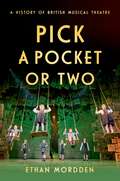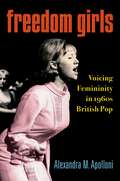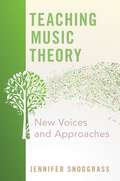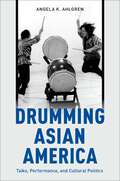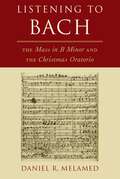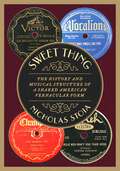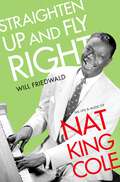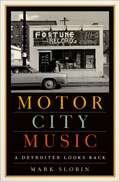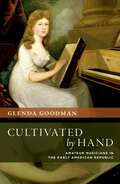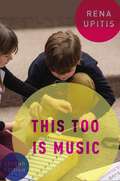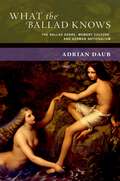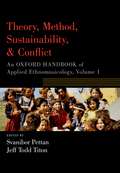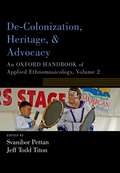- Table View
- List View
Pick a Pocket Or Two: A History of British Musical Theatre
by Ethan MorddenFrom Gilbert and Sullivan to Andrew Lloyd Webber, from Julie Andrews to Hugh Jackman, from Half a Sixpence to Matilda, Pick a Pocket Or Two is the story of the British musical: where it began and how it developed. In Pick a Pocket Or Two, acclaimed author Ethan Mordden brings his wit and wisdom to bear in telling the full history of the British musical, from The Beggar's Opera (1728) to the present, with an interest in isolating the unique qualities of the form and its influence on the American model. To place a very broad generalization, the American musical is regarded as largely about ambition fulfilled, whereas the British musical is about social order. Oklahoma!'s Curly wins the heart of the farmer Laurey--or, in other words, the cowboy becomes a landowner, establishing a truce between the freelancers on horseback and the ruling class. Half a Sixpence, on the other hand, finds a working-class boy coming into a fortune and losing it to fancy Dans, whereupon he is reunited with his working-class sweetheart, his modest place in the social order affirmed. Anecdotal and evincing a strong point of view, the book covers not only the shows and their authors but the personalities as well--W. S. Gilbert trying out his stagings on a toy theatre, Ivor Novello going to jail for abusing wartime gas rationing during World War II, fabled producer C. B. Cochran coming to a most shocking demise for a man whose very name meant "classy, carefree entertainment." Unabashedly opinionated and an excellent stylist, author Ethan Mordden provokes as much as he pleases. Mordden is the preeminent historian of the form, and his book will be required reading for readers of all walks, from the most casual of musical theater goers to musical theater buffs to students and scholars of the form.
Pick a Pocket Or Two: A History of British Musical Theatre
by Ethan MorddenFrom Gilbert and Sullivan to Andrew Lloyd Webber, from Julie Andrews to Hugh Jackman, from Half a Sixpence to Matilda, Pick a Pocket Or Two is the story of the British musical: where it began and how it developed. In Pick a Pocket Or Two, acclaimed author Ethan Mordden brings his wit and wisdom to bear in telling the full history of the British musical, from The Beggar's Opera (1728) to the present, with an interest in isolating the unique qualities of the form and its influence on the American model. To place a very broad generalization, the American musical is regarded as largely about ambition fulfilled, whereas the British musical is about social order. Oklahoma!'s Curly wins the heart of the farmer Laurey--or, in other words, the cowboy becomes a landowner, establishing a truce between the freelancers on horseback and the ruling class. Half a Sixpence, on the other hand, finds a working-class boy coming into a fortune and losing it to fancy Dans, whereupon he is reunited with his working-class sweetheart, his modest place in the social order affirmed. Anecdotal and evincing a strong point of view, the book covers not only the shows and their authors but the personalities as well--W. S. Gilbert trying out his stagings on a toy theatre, Ivor Novello going to jail for abusing wartime gas rationing during World War II, fabled producer C. B. Cochran coming to a most shocking demise for a man whose very name meant "classy, carefree entertainment." Unabashedly opinionated and an excellent stylist, author Ethan Mordden provokes as much as he pleases. Mordden is the preeminent historian of the form, and his book will be required reading for readers of all walks, from the most casual of musical theater goers to musical theater buffs to students and scholars of the form.
Make Arts for a Better Life: A Guide for Working with Communities
by Kathleen Van Buren Brian SchragMake Arts for a Better Life: A Guide for Working with Communities provides a ground-breaking model for arts advocacy. Drawing upon methods and theories from disciplines such as ethnomusicology, anthropology, folklore, community development, and communication studies, the Guide presents an in-depth approach to researching artistic practices within communities and to developing arts-based projects that address locally-defined needs. Through clear methodology, case studies from around the world, and sample activities, the Guide helps move readers from arts research to project development to project evaluation. Woven into the discussions are critical reflections on the concept of a "better life" and ethical issues in arts advocacy. Accessible writing and visual cues ensure that readers can easily locate sections which may be particularly pertinent to their work, whether based on types of arts (music, drama, dance, oral verbal arts, visual arts) or professional positions (educators, scholars, project leaders). For additional resources, readers can access an accompanying website offering methodology "cheat sheets," sample research documents, and suggestions for educators, scholars, and project leaders.
Make Arts for a Better Life: A Guide for Working with Communities
by Brian Schrag Kathleen Van BurenMake Arts for a Better Life: A Guide for Working with Communities provides a ground-breaking model for arts advocacy. Drawing upon methods and theories from disciplines such as ethnomusicology, anthropology, folklore, community development, and communication studies, the Guide presents an in-depth approach to researching artistic practices within communities and to developing arts-based projects that address locally-defined needs. Through clear methodology, case studies from around the world, and sample activities, the Guide helps move readers from arts research to project development to project evaluation. Woven into the discussions are critical reflections on the concept of a "better life" and ethical issues in arts advocacy. Accessible writing and visual cues ensure that readers can easily locate sections which may be particularly pertinent to their work, whether based on types of arts (music, drama, dance, oral verbal arts, visual arts) or professional positions (educators, scholars, project leaders). For additional resources, readers can access an accompanying website offering methodology "cheat sheets," sample research documents, and suggestions for educators, scholars, and project leaders.
Freedom Girls: Voicing Femininity in 1960s British Pop
by Alexandra M. ApolloniFreedom Girls: Voicing Femininity in 1960s British Pop shows how the vocal performances of girl singers in 1960s Britain defined-and sometimes defied-ideas about what it meant to be a young woman in the 1960s British pop music scene. The singing and expressive voices of Sandie Shaw, Cilla Black, Millie Small, Dusty Springfield, Lulu, Marianne Faithfull, and P.P. Arnold, reveal how vocal sound shapes access to social mobility, and consequently, access to power and musical authority. The book examines how Sandie Shaw and Cilla Black's ordinary girl personas were tied to whiteness and, in Black's case, her Liverpool origins. It shows how Dusty Springfield and Jamaican singer Millie Small engaged with the transatlantic sounds of soul and and ska, respectively, transforming ideas about musical genre, race, and gender. It reveals how attitudes about sexuality and youth in rock culture shaped the vocal performances of Lulu and Marianne Faithfull, and how P.P. Arnold has re-narrated rock history to center Black women's vocality. Freedom Girls draws on a broad array of archival sources, including music magazines, fashion and entertainment magazines produced for young women, biographies and interviews, audience research reports, and others to inform analysis of musical recordings (including such songs as "As Tears Go By," "Son of a Preacher Man," and others) and performances on television programs such as Ready Steady Go!, Shindig, and other 1960s music shows. These performances reveal the historical and contemporary connections between voice, social mobility, and musical authority, and demonstrate how singers used voice to navigate the boundaries of race, class, and gender.
Teaching Music Theory: New Voices and Approaches
by Jennifer SnodgrassIn recent years, music theory educators around the country have developed new and innovative teaching approaches, reintroducing a sense of purpose into their classrooms. In this book, author and veteran music theory educator Jennifer Snodgrass visits several of these teachers, observing them in their music theory classrooms and providing lesson plans that build upon their approaches. Based on three years of field study spanning seventeen states, coupled with reflections on her own teaching strategies,ÂTeaching Music Theory: New Voices and Approaches highlights real-life teaching approaches from effective (and sometimes award-winning) instructors from a wide range of institutions: high schools, community colleges, liberal arts colleges, and conservatories. Throughout the book, Snodgrass focuses on topics like classroom environment, collaborative learning, undergraduate research and professional development, and curriculum reform. She also emphasizes the importance of a diverse, progressive, and inclusive teaching environment throughout, from encouraging student involvement in curriculum planning to designing lesson plans and assessments so that pedagogical concepts can easily be transferred to the applied studio, performance ensemble, and other courses outside of music. An accessible and valuable text designed with the needs of both students and faculty in mind,Teaching Music Theory provides teachers with a vital set of tools to rejuvenate the classroom and produce confident, empowered students.
TEACHING MUSIC THEORY C: New Voices and Approaches
by Jennifer SnodgrassIn recent years, music theory educators around the country have developed new and innovative teaching approaches, reintroducing a sense of purpose into their classrooms. In this book, author and veteran music theory educator Jennifer Snodgrass visits several of these teachers, observing them in their music theory classrooms and providing lesson plans that build upon their approaches. Based on three years of field study spanning seventeen states, coupled with reflections on her own teaching strategies,ÂTeaching Music Theory: New Voices and Approaches highlights real-life teaching approaches from effective (and sometimes award-winning) instructors from a wide range of institutions: high schools, community colleges, liberal arts colleges, and conservatories. Throughout the book, Snodgrass focuses on topics like classroom environment, collaborative learning, undergraduate research and professional development, and curriculum reform. She also emphasizes the importance of a diverse, progressive, and inclusive teaching environment throughout, from encouraging student involvement in curriculum planning to designing lesson plans and assessments so that pedagogical concepts can easily be transferred to the applied studio, performance ensemble, and other courses outside of music. An accessible and valuable text designed with the needs of both students and faculty in mind,Teaching Music Theory provides teachers with a vital set of tools to rejuvenate the classroom and produce confident, empowered students.
DRUMMING ASIAN AMERICA C: Taiko, Performance, and Cultural Politics
by Angela K. AhlgrenWith its dynamic choreographies and booming drumbeats, taiko has gained worldwide popularity since its emergence in 1950s Japan. Harnessed by Japanese Americans in the late 1960s, taiko's sonic largesse and buoyant energy challenged stereotypical images of Asians in America as either model minorities or sinister foreigners. While the majority of North American taiko players are Asian American, over 400 groups now exist across the US and Canada, and players come from a range of backgrounds. Using ethnographic and historical approaches, combined with in-depth performance description and analysis, this book explores the connections between taiko and Asian American cultural politics. Based on original and archival interviews, as well as the author's extensive experience as a taiko player, this book highlights the Midwest as a site for Asian American cultural production and makes embodied experience central to inquiries about identity, including race, gender, and sexuality. The book builds on insights from the fields of dance studies, ethnomusicology, performance studies, queer and feminist theory, and Asian American studies to argue that taiko players from a variety of identity positions perform Asian America on stage, as well as in rehearsals, festivals, schools, and through interactions with audiences. While many taiko players play simply for the love of its dynamism and physicality, this book demonstrates that politics are built into even the most mundane aspects of rehearsing and performing.
Listening to Bach: The Mass in B Minor and the Christmas Oratorio
by Daniel R. MelamedOf all the things we can know about J. S. Bach's Mass in B Minor and Christmas Oratorio, the most profound come from things we can hear. Listening to Bach explores musical style as it was understood in the early eighteenth century. It encourages ways of listening that take eighteenth-century musical sensibilities into account and that recognize our place as inheritors of a long tradition of performance and interpretation. Daniel R. Melamed shows how to recognize old and new styles in sacred music of Bach's time, and how movements in these styles are constructed. This opens the possibility of listening to the Mass in B Minor as Bach's demonstration of the possibilities of contrasting, combining, and reconciling old and new styles. It also shows how to listen for elements that would have been heard as most significant in the early eighteenth century, including markers of sleep arias, love duets, secular choral arias, and other movement types. This offers a musical starting point for listening for the ways Bach put these types to use in the Mass in B Minor and the Christmas Oratorio. The book also offers ways to listen to and think about works created by parody, the re-use of music for new words and a new purpose, like almost all of the Mass in B Minor and Christmas Oratorio. And it shows that modern performances of these works are stamped with audible consequences of our place in the twenty-first century. The ideological choices we make in performing the Mass and Oratorio, part of the legacy of their performance and interpretation, affect the way the work is understood and heard today. All these topics are illustrated with copious audio examples on a companion Web site, offering new ways of listening to some of Bach's greatest music.
Listening to Bach: The Mass in B Minor and the Christmas Oratorio
by Daniel R. MelamedOf all the things we can know about J. S. Bach's Mass in B Minor and Christmas Oratorio, the most profound come from things we can hear. Listening to Bach explores musical style as it was understood in the early eighteenth century. It encourages ways of listening that take eighteenth-century musical sensibilities into account and that recognize our place as inheritors of a long tradition of performance and interpretation. Daniel R. Melamed shows how to recognize old and new styles in sacred music of Bach's time, and how movements in these styles are constructed. This opens the possibility of listening to the Mass in B Minor as Bach's demonstration of the possibilities of contrasting, combining, and reconciling old and new styles. It also shows how to listen for elements that would have been heard as most significant in the early eighteenth century, including markers of sleep arias, love duets, secular choral arias, and other movement types. This offers a musical starting point for listening for the ways Bach put these types to use in the Mass in B Minor and the Christmas Oratorio. The book also offers ways to listen to and think about works created by parody, the re-use of music for new words and a new purpose, like almost all of the Mass in B Minor and Christmas Oratorio. And it shows that modern performances of these works are stamped with audible consequences of our place in the twenty-first century. The ideological choices we make in performing the Mass and Oratorio, part of the legacy of their performance and interpretation, affect the way the work is understood and heard today. All these topics are illustrated with copious audio examples on a companion Web site, offering new ways of listening to some of Bach's greatest music.
Sweet Thing: The History and Musical Structure of a Shared American Vernacular Form (Oxford Studies in Music Theory)
by Nicholas StoiaAs children, many of us learn to sing, "If you're happy and you know it, clap your hands." But despite the familiarity of this tune, few of us realize that what we're singing is actually part of a pervasive - and centuries-old - musical scheme. This particular pattern, the "Sweet Thing" scheme, has generated a large group of songs spanning a broad range of topics, genres, and time periods, but all related through a specific stanzaic form. Early twentieth-century blues songs "My Babe" and "Motherless Children," country songs "Peg and Awl" and "Crawdad Song," and gospel songs "Pure Religion" and "This Train" use this form, along with popular songs like Ray Charles's "I Got a Woman," The Beatles's "One After 909," and the Velvet Underground's "I'm Waiting for the Man." Sweet Thing: The History and Musical Structure of a Shared American Vernacular Form studies one of the most productive and enduring shared musical resources in North American vernacular music. Author Nicholas Stoia offers the most comprehensive examination to date of the long history of the "Sweet Thing" scheme, exploring how it made its way from sixteenth-century Scotland to eighteenth-century British broadside ballads to nineteenth-century American ragtime. Stoia also examines the form in various contexts, including early blues and country music, and moving forward to rhythm and blues, soul, and rock music, connecting these modern forms to their ancient roots. Through this close look at a ubiquitous musical from, Sweet Thing shows us how it has linked listeners and musicians alike across the boundaries of genre, race, and even time.
Sweet Thing: The History and Musical Structure of a Shared American Vernacular Form (Oxford Studies in Music Theory)
by Nicholas StoiaAs children, many of us learn to sing, "If you're happy and you know it, clap your hands." But despite the familiarity of this tune, few of us realize that what we're singing is actually part of a pervasive - and centuries-old - musical scheme. This particular pattern, the "Sweet Thing" scheme, has generated a large group of songs spanning a broad range of topics, genres, and time periods, but all related through a specific stanzaic form. Early twentieth-century blues songs "My Babe" and "Motherless Children," country songs "Peg and Awl" and "Crawdad Song," and gospel songs "Pure Religion" and "This Train" use this form, along with popular songs like Ray Charles's "I Got a Woman," The Beatles's "One After 909," and the Velvet Underground's "I'm Waiting for the Man." Sweet Thing: The History and Musical Structure of a Shared American Vernacular Form studies one of the most productive and enduring shared musical resources in North American vernacular music. Author Nicholas Stoia offers the most comprehensive examination to date of the long history of the "Sweet Thing" scheme, exploring how it made its way from sixteenth-century Scotland to eighteenth-century British broadside ballads to nineteenth-century American ragtime. Stoia also examines the form in various contexts, including early blues and country music, and moving forward to rhythm and blues, soul, and rock music, connecting these modern forms to their ancient roots. Through this close look at a ubiquitous musical from, Sweet Thing shows us how it has linked listeners and musicians alike across the boundaries of genre, race, and even time.
Straighten Up and Fly Right: The Life and Music of Nat King Cole (Cultural Biographies)
by Will FriedwaldOne of the most popular and memorable American musicians of the 20th century, Nat King Cole (1919-65) is remembered today as both a pianist and a singer, a feat rarely accomplished in the world of popular music. Now, in this complete life and times biography, author Will Friedwald offers a new take on this fascinating musician, framing him first as a bandleader and then as a star. In Cole's early phase, Friedwald explains, his primary task of keeping his trio going was just as much of a focus for him as his own playing and singing, always a collective or group performance. In the second act, Cole's collaborators were more likely to be arranger-conductors like Nelson Riddle and Gordon Jenkins, rather than his sidemen on bass and guitar. In the first act, his sidemen were equals, in the second phase, his collaborators were tasked exclusively with putting the focus on him, making him sound good, while being largely invisible themselves. Friedwald brings his full musical knowledge to bear in putting the man in the work, demonstrating how this duality appears over and over again in Cole's life and career: jazz vs. pop, solo vs. trio, piano vs. voice, wife number one (Nadine) vs. wife number two (Maria), the good songs vs. the less-than-good songs, the rhythm numbers vs. the ballads, the funny songs and novelties vs. the "serious" songs of love and loss, Cole as an advocate for the Great American Songbook vs. Cole the intrepid explorer of other options: world music, rhythm & blues, country & western. Cole was different from his contemporaries in other ways; for roughly ten years after the war, the majority of hitmakers on the pop charts were veterans of the big band experience, from Sinatra on down.
Straighten Up and Fly Right: The Life and Music of Nat King Cole (Cultural Biographies)
by Will FriedwaldOne of the most popular and memorable American musicians of the 20th century, Nat King Cole (1919-65) is remembered today as both a pianist and a singer, a feat rarely accomplished in the world of popular music. Now, in this complete life and times biography, author Will Friedwald offers a new take on this fascinating musician, framing him first as a bandleader and then as a star. In Cole's early phase, Friedwald explains, his primary task of keeping his trio going was just as much of a focus for him as his own playing and singing, always a collective or group performance. In the second act, Cole's collaborators were more likely to be arranger-conductors like Nelson Riddle and Gordon Jenkins, rather than his sidemen on bass and guitar. In the first act, his sidemen were equals, in the second phase, his collaborators were tasked exclusively with putting the focus on him, making him sound good, while being largely invisible themselves. Friedwald brings his full musical knowledge to bear in putting the man in the work, demonstrating how this duality appears over and over again in Cole's life and career: jazz vs. pop, solo vs. trio, piano vs. voice, wife number one (Nadine) vs. wife number two (Maria), the good songs vs. the less-than-good songs, the rhythm numbers vs. the ballads, the funny songs and novelties vs. the "serious" songs of love and loss, Cole as an advocate for the Great American Songbook vs. Cole the intrepid explorer of other options: world music, rhythm & blues, country & western. Cole was different from his contemporaries in other ways; for roughly ten years after the war, the majority of hitmakers on the pop charts were veterans of the big band experience, from Sinatra on down.
Motor City Music: A Detroiter Looks Back
by Mark SlobinThis is the first-ever historical study across all musical genres in any American metropolis. Detroit in the 1940s-60s was not just "the capital of the twentieth century" for industry and the war effort, but also for the quantity and extremely high quality of its musicians, from jazz to classical to ethnic. The author, a Detroiter from 1943, begins with a reflection of his early life with his family and others, then weaves through the music traffic of all the sectors of a dynamic and volatile city. Looking first at the crucial role of the public schools in fostering talent, Motor City Music surveys the neighborhoods of older European immigrants and of the later huge waves of black and white southerners who migrated to Detroit to serve the auto and defense industries. Jazz stars, polka band leaders, Jewish violinists, and figures like Lily Tomlin emerge in the spotlight. Shaping institutions, from the Ford Motor Company and the United Auto Workers through radio stations and Motown, all deployed music to bring together a city rent by relentless segregation, policing, and spasms of violence. The voices of Detroit's poets, writers, and artists round out the chorus.
Motor City Music: A Detroiter Looks Back
by Mark SlobinThis is the first-ever historical study across all musical genres in any American metropolis. Detroit in the 1940s-60s was not just "the capital of the twentieth century" for industry and the war effort, but also for the quantity and extremely high quality of its musicians, from jazz to classical to ethnic. The author, a Detroiter from 1943, begins with a reflection of his early life with his family and others, then weaves through the music traffic of all the sectors of a dynamic and volatile city. Looking first at the crucial role of the public schools in fostering talent, Motor City Music surveys the neighborhoods of older European immigrants and of the later huge waves of black and white southerners who migrated to Detroit to serve the auto and defense industries. Jazz stars, polka band leaders, Jewish violinists, and figures like Lily Tomlin emerge in the spotlight. Shaping institutions, from the Ford Motor Company and the United Auto Workers through radio stations and Motown, all deployed music to bring together a city rent by relentless segregation, policing, and spasms of violence. The voices of Detroit's poets, writers, and artists round out the chorus.
Cultivated by Hand: Amateur Musicians in the Early American Republic (New Cultural History of Music)
by Glenda GoodmanScattered in archives and historical societies across the United States are hundreds of volumes of manuscript music, copied by hand by eighteenth-century amateurs. Often overlooked, amateur music making played a key role in the construction of gender, class, race, and nation in the post-revolution years of the United States. These early Americans, seeking ways to present themselves as genteel, erudite, and pious, saw copying music by hand and performing it in intimate social groups as a way to make themselves--and their new nation-appear culturally sophisticated. Following a select group of amateur musicians, Cultivated by Hand makes the case that amateur music making was both consequential to American culture of the eighteenth century and aligned with other forms of self-fashioning. This interdisciplinary study explores the social and material practices of amateur music making, analyzing the materiality of manuscripts, tracing the lives of individual musicians, and uncovering their musical tastes and sensibilities. Author Glenda Goodman explores highly personal yet often denigrated experiences of musically "accomplished" female amateurs in particular, who grappled with finding a meaningful place in their lives for music. Revealing the presence of these unacknowledged subjects in music history, Cultivated by Hand reclaims the importance of such work and presents a class of musicians whose labors should be taken into account.
Cultivated by Hand: Amateur Musicians in the Early American Republic (New Cultural History of Music)
by Glenda GoodmanScattered in archives and historical societies across the United States are hundreds of volumes of manuscript music, copied by hand by eighteenth-century amateurs. Often overlooked, amateur music making played a key role in the construction of gender, class, race, and nation in the post-revolution years of the United States. These early Americans, seeking ways to present themselves as genteel, erudite, and pious, saw copying music by hand and performing it in intimate social groups as a way to make themselves--and their new nation-appear culturally sophisticated. Following a select group of amateur musicians, Cultivated by Hand makes the case that amateur music making was both consequential to American culture of the eighteenth century and aligned with other forms of self-fashioning. This interdisciplinary study explores the social and material practices of amateur music making, analyzing the materiality of manuscripts, tracing the lives of individual musicians, and uncovering their musical tastes and sensibilities. Author Glenda Goodman explores highly personal yet often denigrated experiences of musically "accomplished" female amateurs in particular, who grappled with finding a meaningful place in their lives for music. Revealing the presence of these unacknowledged subjects in music history, Cultivated by Hand reclaims the importance of such work and presents a class of musicians whose labors should be taken into account.
This Too is Music
by Rena UpitisThis Too is Music guides and motivates teachers to foster playful and motivating classroom conditions that enable elementary students to thrive as musicians in every way-as singers, improvisers, critical listeners, storytellers, dancers, performers, and composers. Told through anecdotes and illustrated with musical examples, the book explores how all of these aspects of music making are intertwined, quelling any doubts teachers may have regarding their abilities to create an environment where children can improvise, dance, compose, and notate their musical offerings. While the book acknowledges the importance of traditional approaches to teaching notation and performance, the emphasis is on the student's point of view, illustrating how young musicians can learn when their musical ideas are honored and celebrated. Various teaching ideas are presented-some exploratory in nature, others involving direct instruction. Regardless of their nature, all of the activities arise from research on children's musical development in general and their development of notational systems in particular. The ideas and activities have been tested in multiple elementary-classroom environments and pre-service settings. The activities center on music through movement, song, various types of performances, improvisation, and composition and notational development. These activities, which encompass both small-scale classroom lessons and large-scale productions, engage children across subjects, including language, drama, and mathematics. Activities encompass both small-scale classroom lessons and large-scale productions. The book underscores the timeless quality of this pedagogy; even in our digital age, this musical environment appeals to children. The work invites readers to adapt the ideas to their own teaching settings, showing both pre-service and established teachers that they can teach music creatively to build community and to inspire all who enter there.
THIS TOO IS MUSIC C
by Rena UpitisThis Too is Music guides and motivates teachers to foster playful and motivating classroom conditions that enable elementary students to thrive as musicians in every way-as singers, improvisers, critical listeners, storytellers, dancers, performers, and composers. Told through anecdotes and illustrated with musical examples, the book explores how all of these aspects of music making are intertwined, quelling any doubts teachers may have regarding their abilities to create an environment where children can improvise, dance, compose, and notate their musical offerings. While the book acknowledges the importance of traditional approaches to teaching notation and performance, the emphasis is on the student's point of view, illustrating how young musicians can learn when their musical ideas are honored and celebrated. Various teaching ideas are presented-some exploratory in nature, others involving direct instruction. Regardless of their nature, all of the activities arise from research on children's musical development in general and their development of notational systems in particular. The ideas and activities have been tested in multiple elementary-classroom environments and pre-service settings. The activities center on music through movement, song, various types of performances, improvisation, and composition and notational development. These activities, which encompass both small-scale classroom lessons and large-scale productions, engage children across subjects, including language, drama, and mathematics. Activities encompass both small-scale classroom lessons and large-scale productions. The book underscores the timeless quality of this pedagogy; even in our digital age, this musical environment appeals to children. The work invites readers to adapt the ideas to their own teaching settings, showing both pre-service and established teachers that they can teach music creatively to build community and to inspire all who enter there.
What the Ballad Knows: The Ballad Genre, Memory Culture, and German Nationalism (New Cultural History of Music)
by Adrian DaubOver the course of the 19th century, ballads proliferated in German-speaking Europe in a truly remarkable range of contexts. Audiences were of course likely encounter balladry in the volumes of Goethe and Schiller, in various anthologies or illustrated editions. But they were just as likely to come across objects billed as ballads in recitation evenings by popular actors, in song-settings by Schubert and Loewe, in piano pieces by Chopin, in the opera house and the concert hall, in mass-produced drawings, paintings and even chinaware. Ballads were poems one could use - schoolteachers used them to train their students' memory (or punish them), women composers used them to assert their place in the musical canon, actors used them to bolster their income, mothers used them to put their children to sleep. Ballads intersected with gender and class, promising to democratize art, while in fact helping make distinctions. In What the Ballad Knows: The Ballad Genre, Memory Culture and German Nationalism, Adrian Daub tells the story of this itinerant genre across media, periods, regions and social strata and shows that, even though it was often positioned as an authentic product of "German spirit," the ballad frequently unsettled and subverted the national project. The popular imagination rooted these poems in pre-modern oral culture, among bards and peasants in the everyday life of common folk. But in fact nineteenth-century ballads were in the end all about modernity modern modes of association, of attention, of dissemination.
What the Ballad Knows: The Ballad Genre, Memory Culture, and German Nationalism (New Cultural History of Music)
by Adrian DaubOver the course of the 19th century, ballads proliferated in German-speaking Europe in a truly remarkable range of contexts. Audiences were of course likely encounter balladry in the volumes of Goethe and Schiller, in various anthologies or illustrated editions. But they were just as likely to come across objects billed as ballads in recitation evenings by popular actors, in song-settings by Schubert and Loewe, in piano pieces by Chopin, in the opera house and the concert hall, in mass-produced drawings, paintings and even chinaware. Ballads were poems one could use - schoolteachers used them to train their students' memory (or punish them), women composers used them to assert their place in the musical canon, actors used them to bolster their income, mothers used them to put their children to sleep. Ballads intersected with gender and class, promising to democratize art, while in fact helping make distinctions. In What the Ballad Knows: The Ballad Genre, Memory Culture and German Nationalism, Adrian Daub tells the story of this itinerant genre across media, periods, regions and social strata and shows that, even though it was often positioned as an authentic product of "German spirit," the ballad frequently unsettled and subverted the national project. The popular imagination rooted these poems in pre-modern oral culture, among bards and peasants in the everyday life of common folk. But in fact nineteenth-century ballads were in the end all about modernity modern modes of association, of attention, of dissemination.
Theory, Method, Sustainability, and Conflict: An Oxford Handbook of Applied Ethnomusicology, Volume 1 (Oxford Handbooks)
The nine ethnomusicologists who contributed to this volume, balanced in age and gender and hailing from a diverse array of countries, share the goal of stimulating further development in the field of ethnomusicology. By theorizing applied ethnomusicology, offering histories, and detailing practical examples, they explore the themes of peace and conflict studies, ecology, sustainability, and the theoretical and methodological considerations that accompany them. Theory, Method, Sustainability, and Conflict is the first of three paperback volumes derived from the original Oxford Handbook of Applied Ethnomusicology, which can be understood as an applied ethnomusicology project: as a medium of getting to know the thoughts and experiences of global ethnomusicologists, of enriching general knowledge and understanding about ethnomusicologies and applied ethnomusicologies in various parts of the world, and of inspiring readers to put the accumulated knowledge, understanding, and skills into good use for the betterment of our world.
Theory, Method, Sustainability, and Conflict: An Oxford Handbook of Applied Ethnomusicology, Volume 1 (Oxford Handbooks)
by Svanibor Pettan and Jeff Todd TitonThe nine ethnomusicologists who contributed to this volume, balanced in age and gender and hailing from a diverse array of countries, share the goal of stimulating further development in the field of ethnomusicology. By theorizing applied ethnomusicology, offering histories, and detailing practical examples, they explore the themes of peace and conflict studies, ecology, sustainability, and the theoretical and methodological considerations that accompany them. Theory, Method, Sustainability, and Conflict is the first of three paperback volumes derived from the original Oxford Handbook of Applied Ethnomusicology, which can be understood as an applied ethnomusicology project: as a medium of getting to know the thoughts and experiences of global ethnomusicologists, of enriching general knowledge and understanding about ethnomusicologies and applied ethnomusicologies in various parts of the world, and of inspiring readers to put the accumulated knowledge, understanding, and skills into good use for the betterment of our world.
De-Colonization, Heritage, and Advocacy: An Oxford Handbook of Applied Ethnomusicology, Volume 2 (Oxford Handbooks)
The nine ethnomusicologists who contributed to this volume present a diverse range of views, approaches, and methodologies that address indigenous peoples, immigrants, and marginalized communities. Discussing participatory action research, social justice, empowerment, and critical race theory in relation to ethnomusicology, De-Colonization, Heritage, and Advocacy is the second of three paperback volumes derived from the original Oxford Handbook of Applied Ethnomusicology. The Handbook can be understood as an applied ethnomusicology project: as a medium of getting to know the thoughts and experiences of global ethnomusicologists, of enriching general knowledge and understanding about ethnomusicologies and applied ethnomusicologies in various parts of the world, and of inspiring readers to put the accumulated knowledge, understanding, and skills into good use for the betterment of our world.
